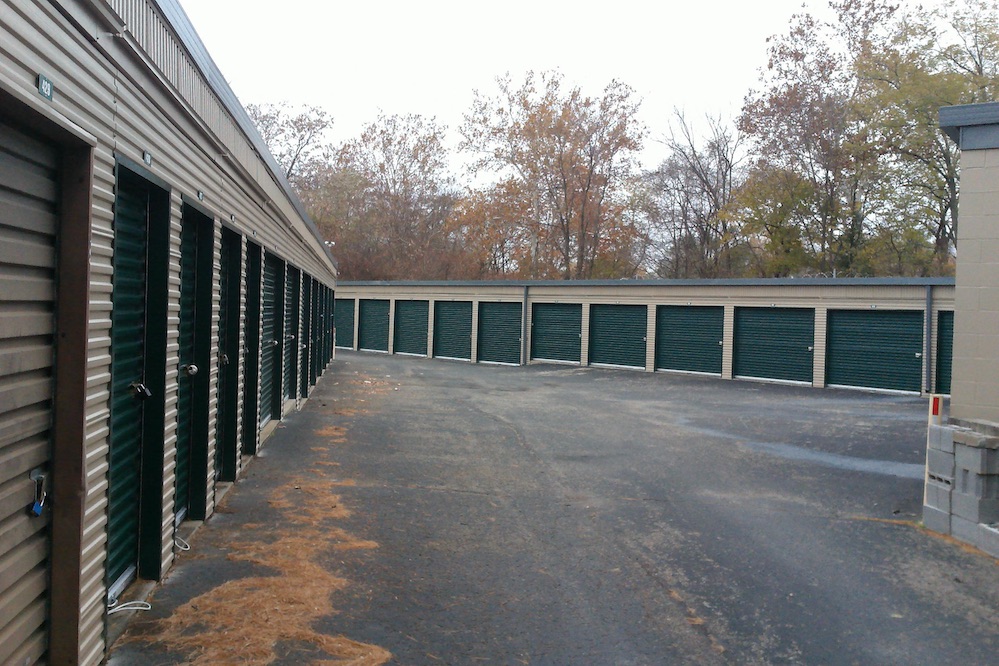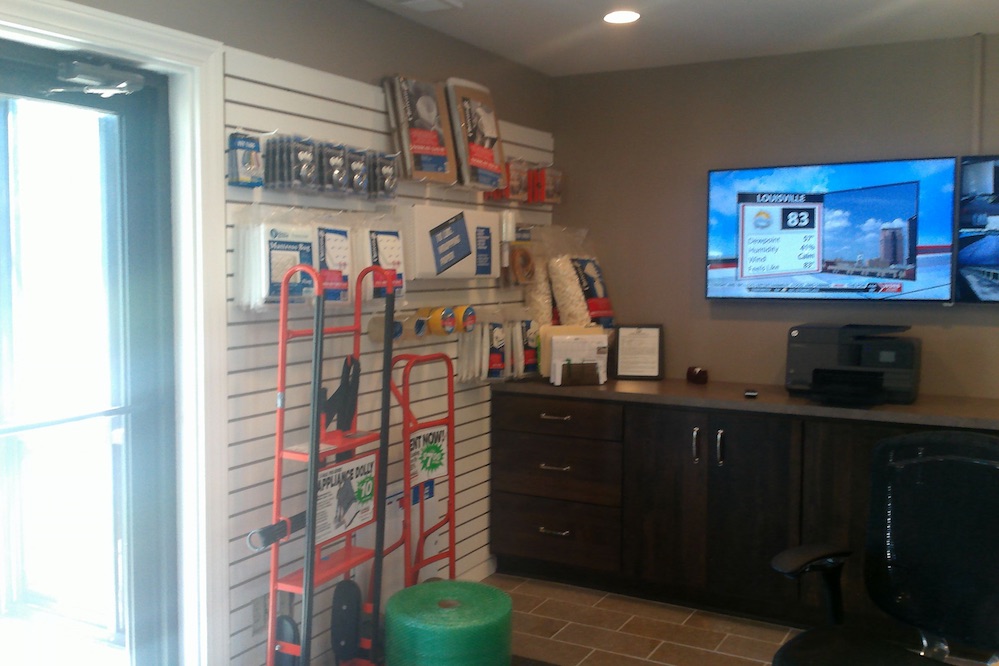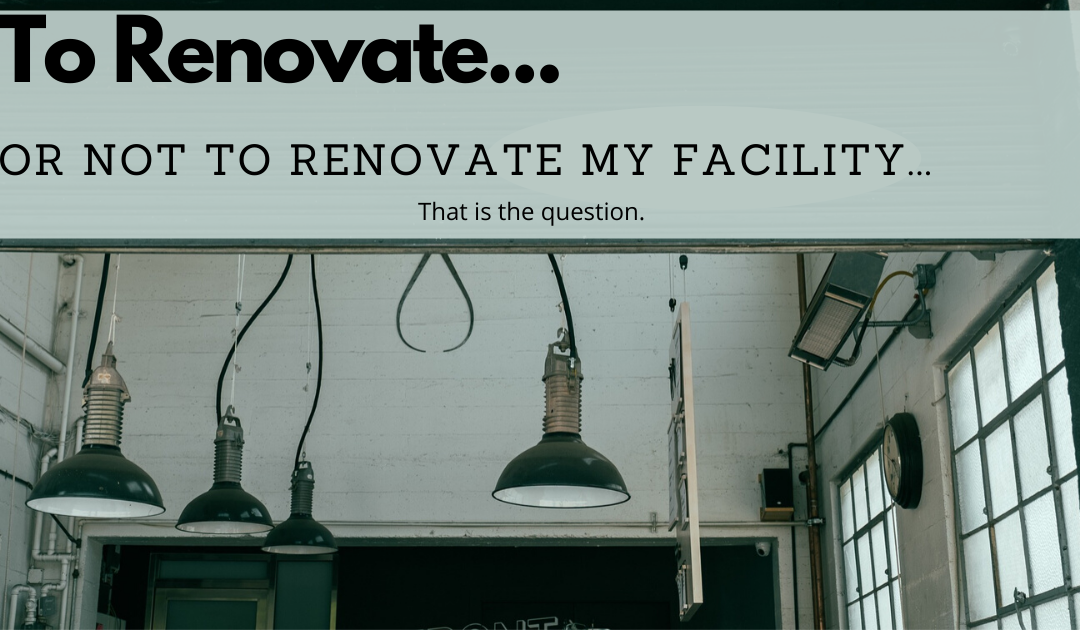There is no doubt about it; if you are in the self-storage business, there will be a moment in time when you ask the question,” Should I renovate my facility?”
For many of us, it is when we are looking to purchase an older project, and we want to reposition or expand it. That is usually my situation.
For others, it is after years of running it and reaping the cash flow. At some point, we show up, turn on the lights, and realize our facility looks tired and used compared to the others nearby.
We have that moment of clarity when we think, “why would someone rent here when right down the street is a brand new facility?”
The Why
The beauty of self storage is its simplicity.
The facilities have steel walls, concrete floors, and apartment-like rents.
Theoretically, unless the metal roofs are rusted and leaking like a shower, one could just adjust their rates downward, invest no money in their facility, and rent units until natural depreciation does its job. There should almost always be a market, at some price, for an old storage facility.
The only economic reason to renovate is ROI. Or, more accurately said, a positive ROI (return on investment).
When we are looking at renovating a project, for every aspect we are considering, we ask two questions.
- Will it help me rent units? (this assumes you have units to rent).
- Will it help me be able to charge more money? (this could be rent or sales price).
If the answer is yes to either one of those questions, we run the numbers.
Decisions Around Acquisition
A typical scenario for us was the J-town project.
We were looking at the acquisition of an existing 25,000 square foot older (I mean old… 1982 old) facility and three acres next door with a 20,000 square foot warehouse (converted to be climate controlled). The facility also could have had added 12,000 more square feet of non-climate controlled units.
A sharp contrast appeared once we had the new section. The new section had nice and shiny doors against dark blacktop, beautiful landscaping, black decorative fencing. In contrast, the older part of the facility had brown first-generation roll-up doors on concrete block and metal buildings.

We say a new 10 x 10 non-climate control could get $90 per unit. In the older existing building, that same space was getting $75. The rest of the unit sizes were approximately the same percentage apart. In other words, unless we wanted two distinctly different price points and facility types—A wealthy section and a poor section, we were going to have to upgrade the older facility.
We saw we could average a 17% increase in rental rates with an upgrade.
Ok. I like 17% income increases, but what will it cost us?
To make the older section look more like the new buildings, we saw that new doors were a must, and we could paint the buildings to match the newer ones we were constructing. The current roofs on the older section were in good shape, so those could be left alone.
So we priced out and new doors, and it was $355 per door to buy and install, and $25,000 to paint. There were 198 units. So we added some contingency and said it would cost us $100,000 to get that 17% increase in income.
So what is the ROI?
The 17% income increase would add $2,575 monthly to that portion of the facility adding and additional $30,906 yearly. At a 7% CAP rate, that $30,906 adds $442,857 of value.
So, in other words, if we spent the $100,000, we would have it paid for in slightly over three years, and that portion of the project would be worth over $400,000 more in value.
Not a bad ROI.
We said yes.
Pricing and Bids
We used a door manufacturer who is an ISS member vendor, and who happens to be at all the trade shows. We knew those were one of the industry’s best doors.
If at all possible, I suggest using ISS member vendors because of their knowledge of our industry, and using them in almost always adds value. A project built by one of these vendors and made from material of an ISS member vendor has a better resale price than a stick-built project in almost all cases.
We will use local plumbers, electricians, and maybe installers (sometimes we use our employees), but we almost always use ISS member vendors for the products we’re installing.
Given that the only moveable parts in a storage facility are the doors, in most cases, we are pricing door replacements rather than door repairs. In some cases, we can spray a clear restorative product to bring back the luster of the door. Sometimes we can spray paint the doors. We often price restoration against replacing the doors.
It is good to compare your office area with your competition. If you have one, in today’s world, my suggestion is to have it look more like a store than an office. Have open space, with retail displays. The area should be as bright as possible with the ability for customers to easily pick something up and buy it (locks, tape, boxes etc.).
We can paint, replace flooring, and add a new retail counter easily and inexpensively in most cases. We can remodel many retail or office areas for $5,000 or less and have it look 200% better.
The goal of a remodel for us is to bring the facility into this century, and add amenities that allow us to get the most we can in rent. Today, if we were pricing out the J-town project, we would have priced new standard doors against the higher-tech doors that open with a phone. We would see if the added rent collected would justify the additional cost.
Also, today, as we are pricing out what amenities to add in a renovation, we are looking at how the amenity added effects our payroll cost. No doubt about it, there are new automations we can use to reduce the amount of personnel required.
For example, you can install doors that overlock automatically and un-overlock automatically when a payment is made. Yes, it cost more, but if installed, will you have less payroll cost?
Run the numbers. Look at the ROI and then your long term business plan and how it relates to employees.
There is a lot more to consider in today’s renovations than there used to be.
Renovation
Back to the J-Town Project.
Our new doors arrived, and it was now time to install them.
Almost every unit was occupied. We worked with the installer to determine how many doors they could do in a day.
Next, we decided on the route they would take in the facility, and what day a given unit would be receiving their new door.
We sent letters, made calls, and sent an email to our customers informing them that on this day (the date) between 2 and 4 or 10 and noon, we would be putting a new door on their units. They could:
- Be there, unlock their unit, watch, and put their lock back on the new door; or
- Leave the key with us, and we would do the work and return the key.
- If they were not there, and most were not, we videoed opening their door and how the unit looked. Then after we installed the new door, we videoed the unit again, showing it looks exactly the same as well as closing and relocking the door.
- If they never responded or brought in their keys, we cut the lock and put a new one on when completed. We videoed as above.
That was the process we followed and didn’t have any issues from the customers. Most were very appreciative.
Few ever complained when the prices went up.

(Closest unit to the left has the older door on it rest have new doors, and the painting was complete. Not bad for a facility built in 1982)

(Office/Retail Area)
Conclusion
If you are looking to reposition a potential acquisition or upgrade a facility you own, making decisions about what renovations to consider and the cost vs. return are not that complicated. But, the decisions must be made methodologically.
For Example:
For the J-town project, we would not have installed the automatic door overclocks if they were available at that time for two reasons. First of all, we could not get a higher rent for the unit, and secondly, given our facility is over 50,000 square feet, we will always have a manager on-site to lock and unlock manually.
If it was a smaller facility and we were looking to reduce payroll, we most likely would have.
Go through decision by decision, calculate the ROI, ask the two questions we have discussed, then decide exactly what renovations you are going to complete.
The self storage industry is evolving fast, and it is my opinion that if we do not keep our facilities relevant and offer what our competition offers, the value of our facilities will go down. There are more and more facilities for the customers to choose from than ever before.
However, if we stay relevant and renovate when needed, we can reap the rewards for years to come in this fantastic business of self storage.



